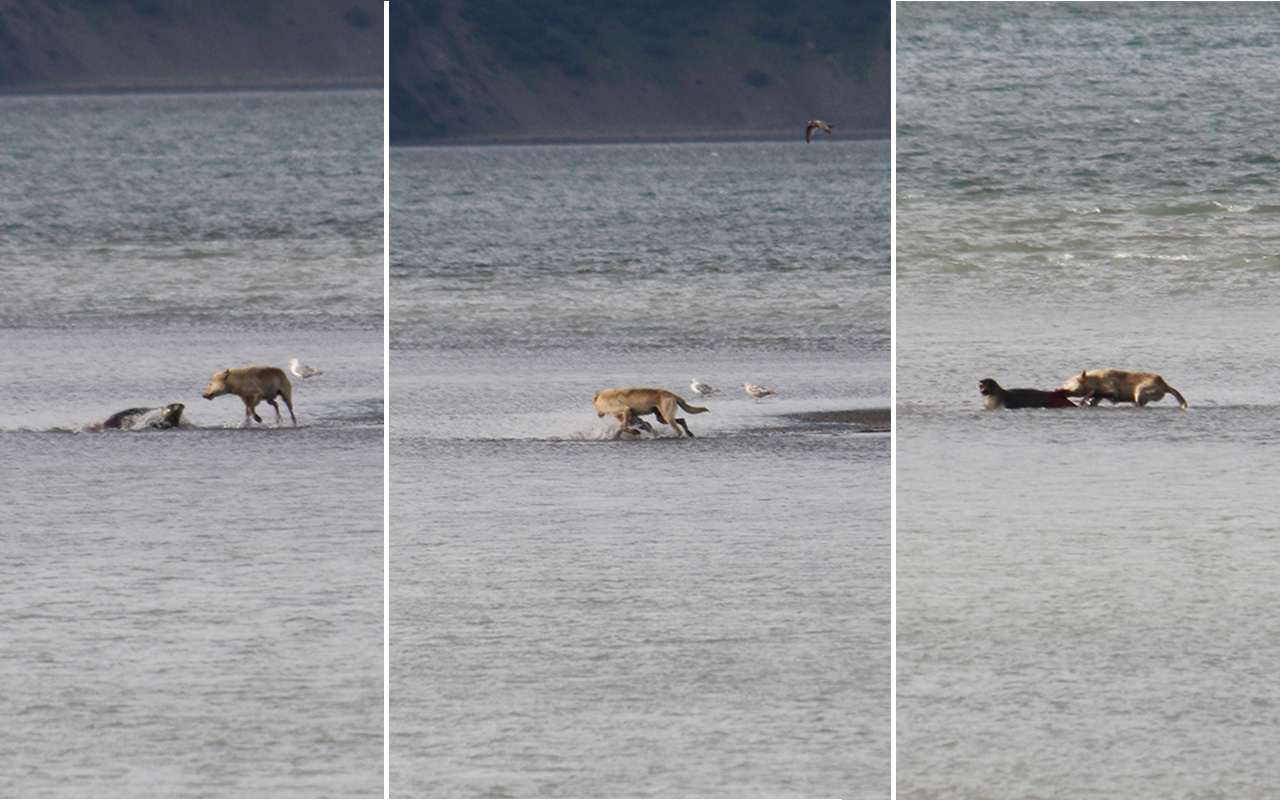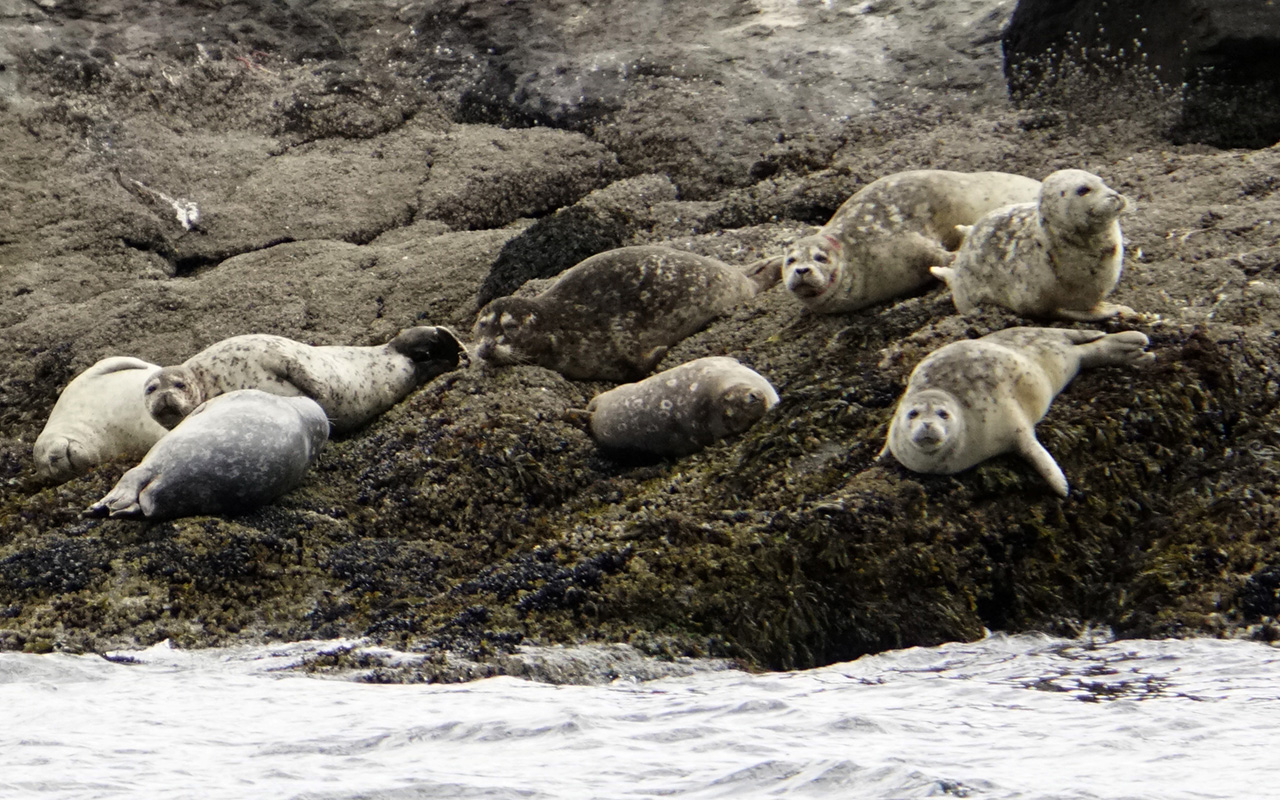There was an outgoing tide at Hallo Bay on the coast of Katmai, as we hiked towards the mouth of Middle Creek where glacial-fed water empties into the ocean. Low tide can be a vulnerable time for species as they swim up into the creek systems or make their way back out to the bay. In the summer, one of the animals most exposed at low tide is spawning salmon. As the salmon stage in the bay and swim upstream into the rivers and creeks they sometimes find themselves in shallow water where they are susceptible to predation by bears, wolves, and birds of prey. As we walked along the creek something suddenly made a large ripple in the water. This time it wasn’t salmon. Instead, a harbor seal popped its head up and looked at us as it swam towards the bay. Harbor seals are commonly seen along the Alaskan coast where they opportunistically feed on the seasonally abundant salmon, flounder, and other fish species.
Low tide is a great opportunity for harbor seals to haul out of the water and rest. NPS Photo/K. Kunce
Several minutes later we made our way onto the beach and spotted a white wolf on the intertidal. A moment later it started running, splashing water as it chased something. It stopped abruptly, its head down in the water biting onto something dark and large. We watched closely as thrashing and splashing in the water continued. Then we were able to get a view of the prey…it was a harbor seal! Maybe it was the seal we had just seen at the mouth of the creek. It may have waited a little too long to swim out with the lowering tide.
We made our way to a log where we sat to observe the ensuing fight. The wolf managed to penetrate the thick skin and blubber of the seal’s tail with the capacity to apply nearly 400 pounds of pressure in its bite. The wolf began tugging the seal out of the water towards a nearby sand bar. The seal arced, throwing its head back in an attempt to bite the wolf. The wolf continued to tug at the open wound as it pulled the seal further and further out of the water. Harbor seals are smooth and graceful swimmers, but are slow and awkward on land. Their fused pelvic bones prevent them from walking or running. Instead, they move their entire body over terrain in a wave-like, undulating motion.

Witnessing the intense battle between a wolf and harbor seal during low tide at Hallo Bay. NPS Photo/K. Griffin
The seal continued to struggle to move away from the wolf. It would put its head down for a few moments at a time, and then wriggle, arc, and free itself momentarily from the jaws of the wolf. The determined wolf quickly circled its prey, and the seal responded with barking and snapping. The seal started to take longer breaks, resting its head on the sand. Though the seal was visibly tired, it broke free from the wolf and made its way into deeper water. The wolf looked worn out too, but was not about to let the seal escape. After more than twenty minutes of fighting, the wolf grabbed ahold of the seal again, pulling it out of the water. After a few more minutes the seal’s movements began to slow down, and the seal looked exhausted. Eventually it stopped moving and the wolf was able to pull it all the way up onto the sandbar.
Wolves wait for spawning salmon at the mouth of Middle Creek where it empties into Hallo Bay. NPS Photo/K. Griffin
After intensely focusing on its prey, the attention of the wolf shifted to a keen awareness of its surroundings. For the first time, the wolf noticed that we were observing from a distance. Now that it had made the kill, it wanted to be sure there wasn’t competition for its hard-earned meal. Eventually we made our way down the beach back towards our camp. We looked back at the site and didn’t see the wolf, but after another minute it trotted over the beach berm with another wolf from the pack. Both wolves began tugging and pulling at the dead seal. Watching the wolf attack the seal was surprising, intense, and at times almost difficult to watch. Although the seal lost the battle, it became nourishment for the wolf pack which included six wolf pups. Brown bears, eagles, and gulls fed off of the carcass for days. Low tides turned into high, and after several days the seal remains washed away to be recycled into the sea.


